The launch of Xpeng in Thailand at this year’s Bangkok International Motor Show (BIMS) marked the brand’s entry into ASEAN, with Singapore (through Premium Automobiles) and Malaysia (through Bermaz Auto) set to follow in the coming months.
At the event, it was announced that Neo Mobility Asia, a joint venture between between Arun Plus Mobility Holdings (a subsidiary of PTT) and MGC-Asia GreenTech, would be responsible for distributorship of Xpeng vehicles in Thailand. The Xpeng G6 is the first model to be offered there, with two variants currently available for pre-booking.
In addition to putting the G6 on display, the Xpeng booth at BIMS also featured other electric vehicles (EVs) from the brand, including a sedan, an SUV and even a flying car. The company isn’t revealing if these products will be offered in ASEAN markets for now, so this is merely a showcase of what Xpeng can offer.
Xpeng G9
The Xpeng G9 was first unveiled back in November 2021 during the Guangzhou Auto Show and is built on the company’s Smart Electric Platform Architecture (SEPA) 2.0 platform. This is also shared with the G6 but the G9 is a larger vehicle, measuring in at 4,891 mm long, 1,937 mm wide, 1,680 mm tall (1,670 mm with air suspension) and with a wheelbase spanning 2,998 mm.
In China, the G9 is available in five variants with prices ranging from 263,900 to 359,900 yuan (about RM172k to RM235k). The range includes the 570 Pro and 570 Max, both of which are equipped with a 78.4-kWh battery for 570 km of range following the CLTC standard.
The ‘570’ variants are rear-wheel drive with a single electric motor rated at 313 PS (308 hp or 230 kW) and 430 Nm of torque. This setup is good for a 0-100 km/h time of 6.4 seconds and top speed of 200 km/h.
Next up are the 702 Pro and 702 Max variants that get the same motor configuration and performance as the ‘570’ variants, but offer up to 702 km of range (CLTC) thanks to an increased battery capacity of 98 kWh. At the top of the heap is the 650 Max, which features a dual-motor setup for all-wheel drive and a total system output of 551 PS (543 hp or 405 kW) and 717 Nm. The added grunt sees the century sprint time drop to 3.9 seconds, although the top speed is the same as other variants.
According to Xpeng, the G9 uses an 800V architecture with silicon carbide technology and supports DC fast charging at a max of 315 kW to get the battery from a 10-80% state of charge (SoC) in about 20 minutes.
In terms of technologies, the G9’s infotainment is powered by a Qualcomm Snapdragon 8155 chipset that is linked to a 10.25-inch digital instrument cluster as well as a pair of 14.96-inch touchscreens. As for driver assistance technologies, Pro-designated variants have a single Nvidia Drive Orin platform paired with five millimeter-wave radars, 12 ultrasonic radars and 12 cameras. Meanwhile, Max variants add two lidars to the sensor suite along with an additional Drive Orin platform.
On the practicality front, the five-seat G9 provides 660 litres of boot space, expandable to 1,576 litres with the rear 60:40 split-folding seats down. There’s also a frunk with 71 litres of storage space at the front.
Xpeng P7i
The P7i is essentially a refresh of the P7 sedan with updated styling, improved power and range as well as an upgraded sensor suite. Launched in China last year, the P7i is offered in ‘550’, ‘610’ and ‘702’ variants with pricing starting from 223,900 yuan (about RM146k) and peaking at 339,900 yuan (about RM222k).
The P7i pictured here is a more recent variant announced this month called the 702 Max Wing Edition, which differs from the rest by having powered front scissor doors. Like the G9, the variant name corresponds to the CLTC range offered.
Unlike the G9, the P7i is built on a 400V architecture that can charge the battery from a 10-80% SoC in 29 minutes. For the ‘702’ variants, the battery is a ternary lithium pack with an energy capacity of 86.2 kWh that provides up to 702 km of range. These come with a rear-mounted electric motor rated at 276 PS (272 hp or 203 kW) and 440 Nm for a 0-100 km/h time of 6.4 seconds and top speed of 200 km/h.
The ‘610’ variants use the same battery as the ‘702’ variants, but with a dual-motor setup rated at 473 PS (467 hp or 348 kW) and 757 Nm for a faster 0-100 km/h time of 3.9 seconds at the expend of range that tops out at 610 km. Lastly, there’s the ‘550’ variants which use a lithium iron phosphate (LFP) battery with a capacity of 64.4 kWh for up to 550 km of range, but with the same motor setup as the ‘702’ variants.
The Nvidia Drive Orin platform powers the P7i’s driver assistance functions (bundled under the Xpilot banner), with higher-end variants getting two units instead of just one. Following the G9, a Qualcomm Snapdragon 8155 chipset handles infotainment, with the cabin sporting a 10.25-inch digital instrument cluster, but just one 14.96-inch touchscreen.
Xpeng Voyager X2
Xpeng has a flying car division called Xpeng AeroHT, which completed a cross-river flight in China with the Voyager X2 in August 2023 and over Dubai a year before that in October. More recently, the two-seat eVTOL (electric vertical take-off and landing) aircraft flew over Guangzhou for the first time last month.
The X2 has eight electric motors, one for each of its eight propellers, and is capable of a maximum speed of 130 km/h. Four independent battery packs power the electric motors and provide about 35 minutes of flight time. The XPENG X2 is equipped with manual and autonomous modes, the latter allowing passengers to enjoy a safe flying experience with simple start, return and landing operations at the touch of a button.
Featuring a carbon-fibre structure, the X2’s empty weight is 360 kg and has a maximum takeoff weight of 560 kg. It can cruise at altitudes of up to 500 metres and is expected to begin production this year, with expected pricing of between USD126,000 and USD236,000 (about RM596k to RM1.11 million).
GALLERY: Xpeng G9
GALLERY: Xpeng P7i
Xpeng Voyager X2
Looking to sell your car? Sell it with Carro.

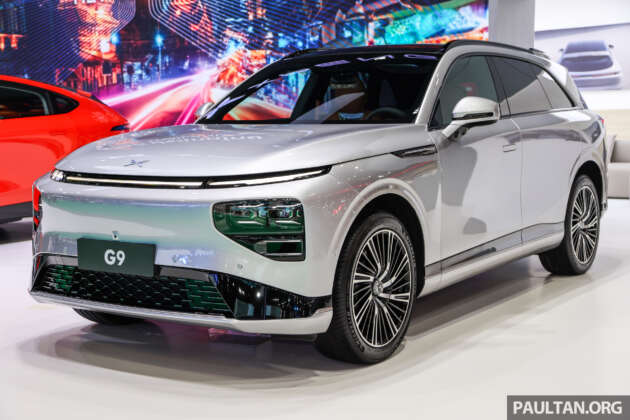
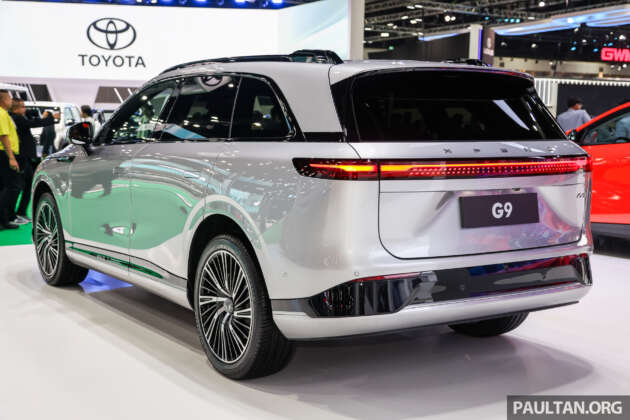
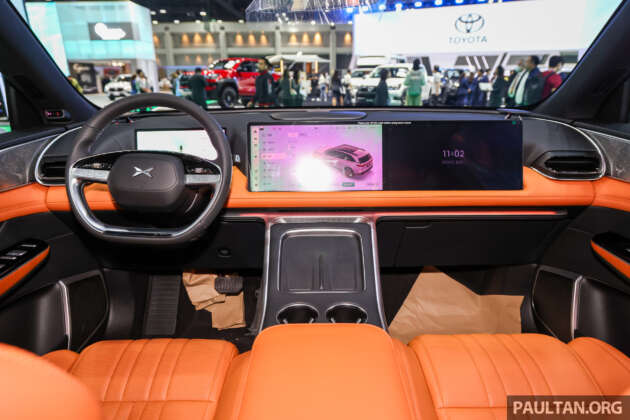
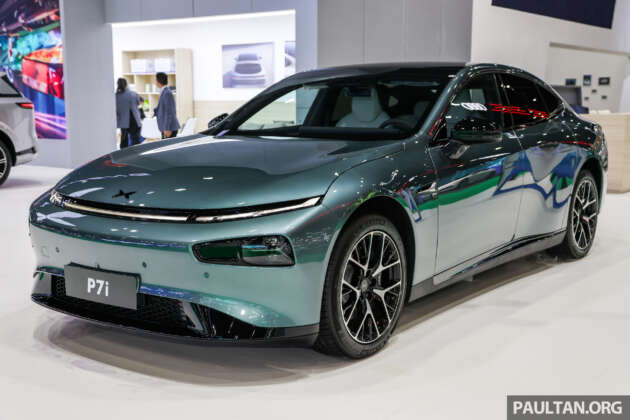


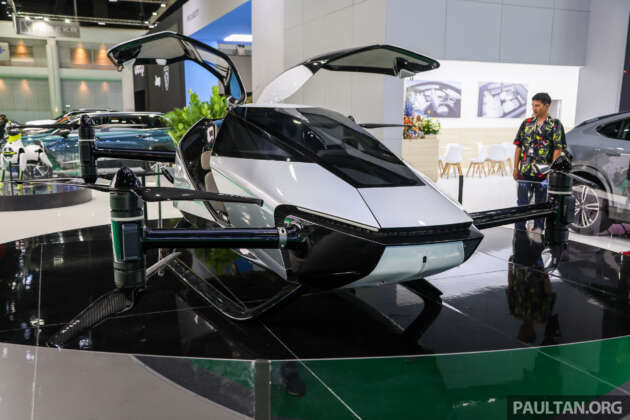
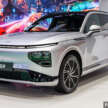
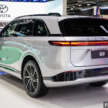
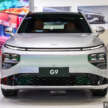
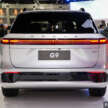
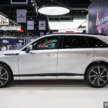
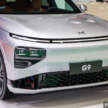
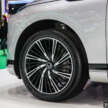
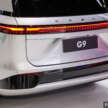
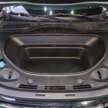
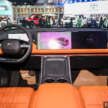
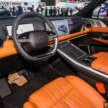
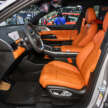
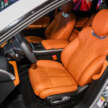
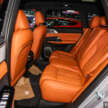
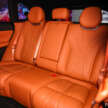
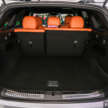
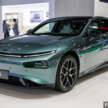
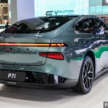
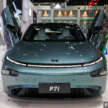
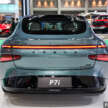
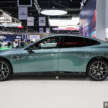
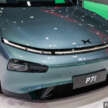
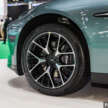
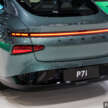
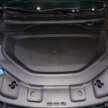
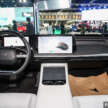
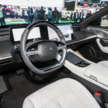
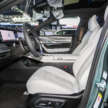
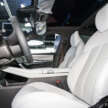
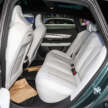
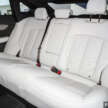
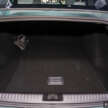
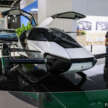
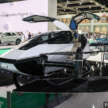
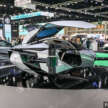
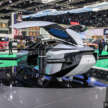
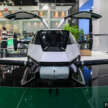
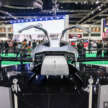
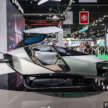
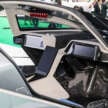
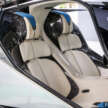

Maybe the Bersatu ex menteri who talked cock about flying cars can learn from me
flying car ok, but price better not be flying also, make it cheaper than byd ok?
Wow we getting the good stuff soon. BYD, Geely, Chery are king of the reliability segment. Now we have the Mercedes/BMW of the EV world soon. Can’t wait.